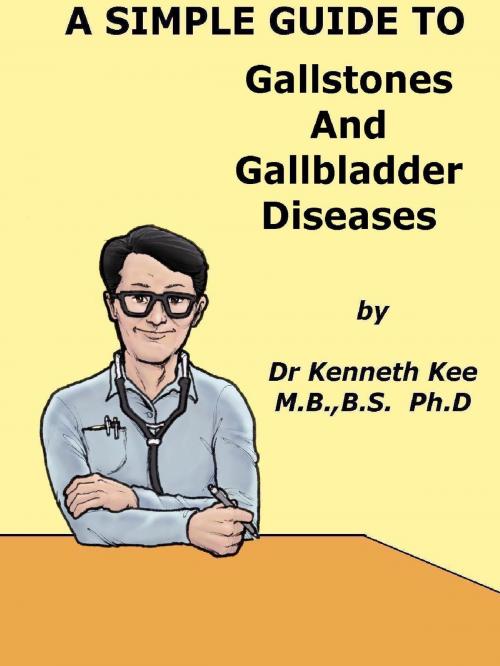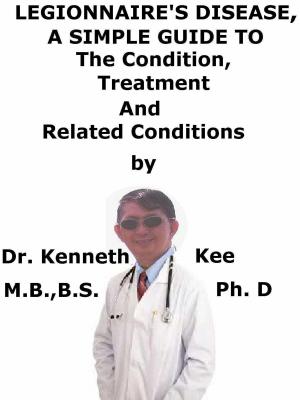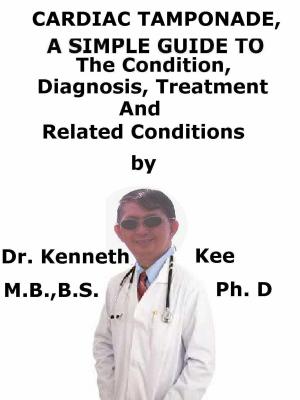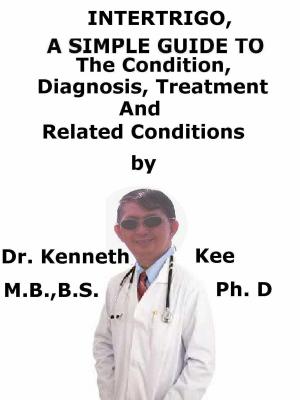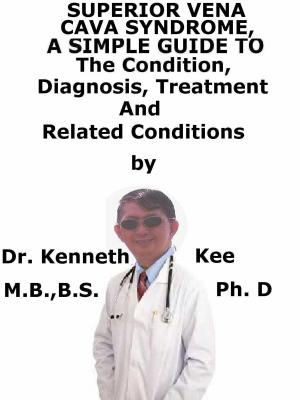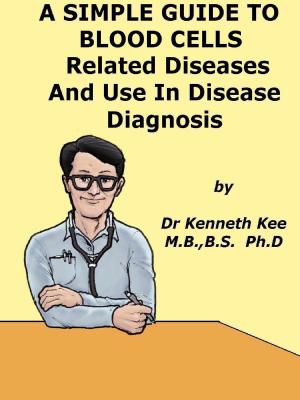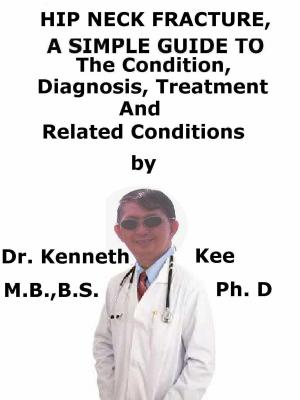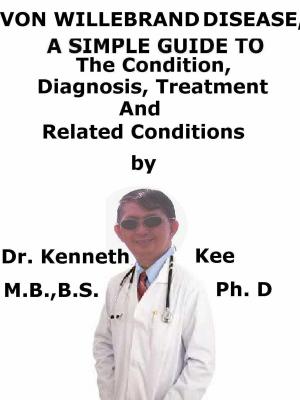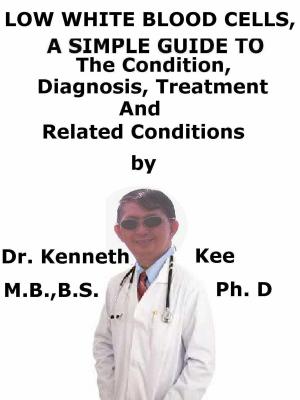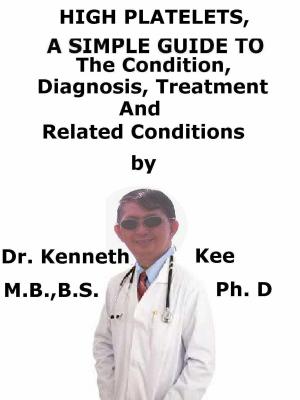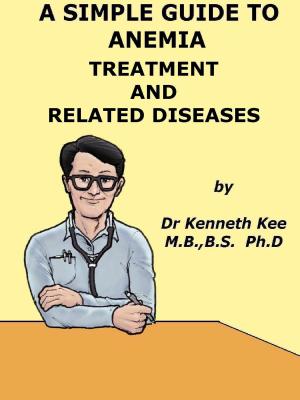A Simple Guide to Gallstones and Gallbldder Diseasess
Nonfiction, Health & Well Being, Health, Ailments & Diseases, Abdominal, Medical| Author: | Kenneth Kee | ISBN: | 9781301641642 |
| Publisher: | Kenneth Kee | Publication: | December 12, 2012 |
| Imprint: | Smashwords Edition | Language: | English |
| Author: | Kenneth Kee |
| ISBN: | 9781301641642 |
| Publisher: | Kenneth Kee |
| Publication: | December 12, 2012 |
| Imprint: | Smashwords Edition |
| Language: | English |
Gallstones are stones which are found in the gallbladder which is a sac that store bile from the liver.
They are made from
-
cholesterol
-
calcium and
-
other substances in the bile.
How are Gallstones formed?
Gallstones are formed when cholesterol and other substances like calcium found in bile combine to form stones.
They are more common in
-
over weight people
-
Females more than males
-
Over the age of forty
What are the symptoms of Gallstones?
Most people with gallstones do not have symptoms.
Symptoms:
-
Mild pain in the upper right part of the abdomen and also just below the sternum just like gastritis.
-
Pain in the right upper back or shoulder blade area.
-
Pain is worse when you eat.
-
Fever and chills
-
Yellowness of the eyes or skin
-
Dark colored urine
-
Chest pain occurs when the pain radiates to the chest
How are Gallstones diagnosed?
-
Pain in the right side of the abdomen
-
Murphy's sign positive.
A thumb pressing against the right of the epigastrium causes more pain when the patients breathes in deeply
- An ultrasound of the right side of the abdomen is the best way to find gallstones.
Most gallstones can be detected from the ultrasound.
- gallbladder scan. A dye is injected into a vein in your arm.
X-rays are taken as the dye moves through your liver, bile duct, gall bladder.
- Endoscopic retrograde cholangiopancreatography (ERCP)
What are the complications of Gallstones?
A gallstone which is stuck in the bile duct (a tube which leads the bile from the liver to the gallbladder and small intestine) can give rise to complications:
-
Gallbladder inflammation or infection (Cholecystitis)
-
Swelling and inflammation of the Pancreas (pancreatitis)
-
Hepatitis due to reflux of the bile back to the liver
-
Peritonitis (inflammation of the inner lining of the abdomen) if the bile duct or gallbladder perforates or burst.
This is an emergency.
What is the treatment of Gallstones?
If there are no symptoms, treatment is not needed.
If there is mild pain, some pain and antispasmodic medicines are given.
Patient is kept for observation.
If the pain goes away, the gallstone may have become unstuck in the bile duct and pass out into the intestine.
If there is severe pain or recurrence of another attack of pain, it is advisable to have the gallbladder removed.
Normal surgery to remove the gallbladder and the gallstones involve 4 holes in the abdomen and the use of a laparoscopic to cut away the gallbladder followed by stitching.
The surgery is usually very safe and the patient may not need to be hospitalized.
In an emergency, such as perforated gallbladder, immediate surgery may be required to remove the gallbladder and cleared the inner abdomen of leaked bile.
Most people with gallstones do not have symptoms.
Sometimes gallstones may be detected while having tests for other health problems.
Sometimes an ultrasound done on a woman during pregnancy may show gallstones.
What is the prognosis of Gallstones?
The prognosis for patients after surgery is usually good.
The bile will go straight to the intestine from the liver.
Digestion of oily food may not as good as before and are usually not noticeable.
How are gallstones prevented?
Avoid eating too much fat or fried food
Avoid obesity
Avoid the excessive amount of calcium taken
TABLE OF CONTENT
Chapter 1
Gallstones
Chapter 2
Gallbladder Diseases
Chapter 3
Cholecystitis
Epilogue
Gallstones are stones which are found in the gallbladder which is a sac that store bile from the liver.
They are made from
-
cholesterol
-
calcium and
-
other substances in the bile.
How are Gallstones formed?
Gallstones are formed when cholesterol and other substances like calcium found in bile combine to form stones.
They are more common in
-
over weight people
-
Females more than males
-
Over the age of forty
What are the symptoms of Gallstones?
Most people with gallstones do not have symptoms.
Symptoms:
-
Mild pain in the upper right part of the abdomen and also just below the sternum just like gastritis.
-
Pain in the right upper back or shoulder blade area.
-
Pain is worse when you eat.
-
Fever and chills
-
Yellowness of the eyes or skin
-
Dark colored urine
-
Chest pain occurs when the pain radiates to the chest
How are Gallstones diagnosed?
-
Pain in the right side of the abdomen
-
Murphy's sign positive.
A thumb pressing against the right of the epigastrium causes more pain when the patients breathes in deeply
- An ultrasound of the right side of the abdomen is the best way to find gallstones.
Most gallstones can be detected from the ultrasound.
- gallbladder scan. A dye is injected into a vein in your arm.
X-rays are taken as the dye moves through your liver, bile duct, gall bladder.
- Endoscopic retrograde cholangiopancreatography (ERCP)
What are the complications of Gallstones?
A gallstone which is stuck in the bile duct (a tube which leads the bile from the liver to the gallbladder and small intestine) can give rise to complications:
-
Gallbladder inflammation or infection (Cholecystitis)
-
Swelling and inflammation of the Pancreas (pancreatitis)
-
Hepatitis due to reflux of the bile back to the liver
-
Peritonitis (inflammation of the inner lining of the abdomen) if the bile duct or gallbladder perforates or burst.
This is an emergency.
What is the treatment of Gallstones?
If there are no symptoms, treatment is not needed.
If there is mild pain, some pain and antispasmodic medicines are given.
Patient is kept for observation.
If the pain goes away, the gallstone may have become unstuck in the bile duct and pass out into the intestine.
If there is severe pain or recurrence of another attack of pain, it is advisable to have the gallbladder removed.
Normal surgery to remove the gallbladder and the gallstones involve 4 holes in the abdomen and the use of a laparoscopic to cut away the gallbladder followed by stitching.
The surgery is usually very safe and the patient may not need to be hospitalized.
In an emergency, such as perforated gallbladder, immediate surgery may be required to remove the gallbladder and cleared the inner abdomen of leaked bile.
Most people with gallstones do not have symptoms.
Sometimes gallstones may be detected while having tests for other health problems.
Sometimes an ultrasound done on a woman during pregnancy may show gallstones.
What is the prognosis of Gallstones?
The prognosis for patients after surgery is usually good.
The bile will go straight to the intestine from the liver.
Digestion of oily food may not as good as before and are usually not noticeable.
How are gallstones prevented?
Avoid eating too much fat or fried food
Avoid obesity
Avoid the excessive amount of calcium taken
TABLE OF CONTENT
Chapter 1
Gallstones
Chapter 2
Gallbladder Diseases
Chapter 3
Cholecystitis
Epilogue
